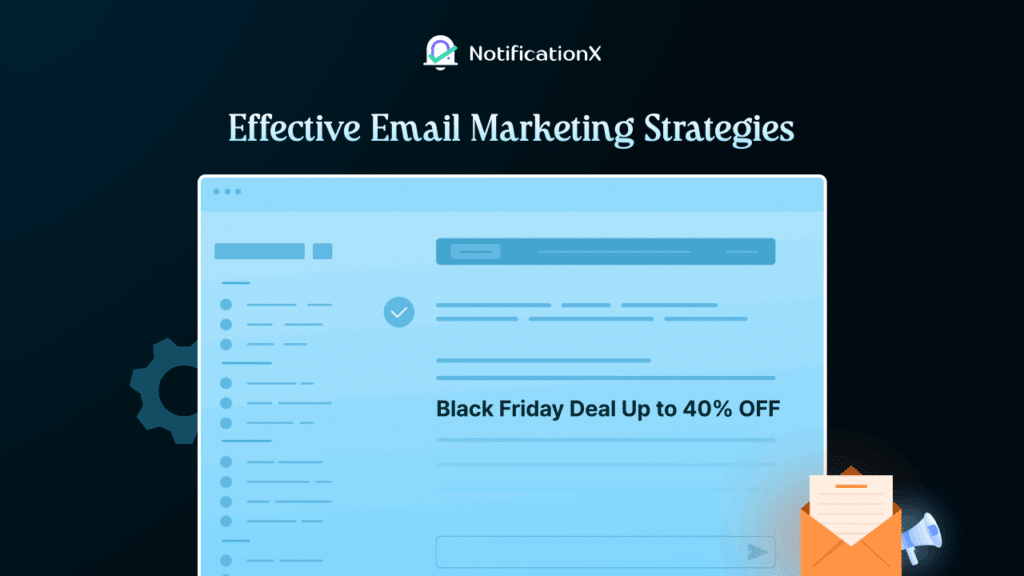Marketing has drastically changed in recent years, with innovative strategies offering businesses new ways to connect with their customers. One such method is Location Based Marketing (LBM), which allows companies to engage audiences based on their exact location. By targeting users based on their real time geographical location, businesses can deliver hyper-relevant offers, boosting customer engagement and driving foot traffic. As digital experiences become more important now, using the right tools to harness location data for marketers to keep you ahead.

If you want to enhance customer experiences, increase sales, or optimize your campaigns, the location based marketing tools can transform your marketing strategy and boost your campaigns this year.
Understanding Location Based Marketing
Location based marketing is a powerful strategy that collects a user’s physical location to deliver personalized content, offers, or advertisements. It works by using location data from mobile devices, Wi-Fi networks, GPS, or beacons to reach customers in real-time, creating contextually relevant experiences. For instance, a retail store might send a special discount notification to nearby shoppers, enticing them to visit the store.
This marketing approach is becoming essential in today’s competitive landscape because it allows businesses to connect with consumers at the perfect moment—when they are physically close to making a purchasing decision. The results? Increased foot traffic, higher conversion rates, and stronger customer engagement.
The benefits of location based marketing extend beyond just driving immediate sales. It enables better customer insights by analyzing location data and helping businesses understand behavior patterns and preferences. This data-driven approach leads to more effective, personalized campaigns that resonate with the right audience at the right time.
Criteria for Selecting Location Based Marketing Tools
Choosing the right location based marketing tools can make or break your campaign’s success. With numerous options available, it is essential to evaluate tools based on key factors that align with your business needs. Here is what to look for,

1. Accuracy and Precision
The core of any location based tool is its ability to pinpoint a user’s location. High accuracy ensures your messaging reaches the right audience at the right time. Tools with advanced GPS, Wi-Fi, or beacon-free technology offer better-targeting capabilities, which directly impact engagement and conversions.
2. Integration with Existing Systems
A good marketing tool should seamlessly integrate with your existing CRM, analytics platforms, and campaign management systems. This allows for smoother data sharing, automation, and holistic performance tracking across multiple marketing channels.
3. User-Friendliness
Ease of use is critical. A tool with an intuitive interface and straightforward setup helps marketers focus on strategy rather than technical hurdles. Consider platforms with simple dashboards, clear reporting, and robust support resources.
4. Analytics and Reporting
Insightful data is the backbone of successful campaigns. Tools that offer real-time analytics, heat maps, customer behavior tracking, and conversion metrics empower businesses to refine their strategies and optimize performance for better results.
5. Cost and Scalability
Consider tools that align with your budget while offering scalable features. As your business grows, your marketing tools should be able to expand without requiring a complete overhaul.
Top 5 Location Based Marketing Tools to Boost Your Campaigns in 2024
To successfully leverage the power of location data in your marketing strategy, it is crucial to pick tools that align with your business goals, offer precision, and deliver actionable insights. Below, we expand on the top five location based marketing tools of 2024 that are shaping the future of targeted marketing.
1. Mapsted: Redefining Location Accuracy
Mapsted offers hardware-free location technology, eliminating the need for external devices like beacons. With over 100 patents, their system provides one-meter accuracy, ensuring precise targeting. Benefits include lower costs, increased engagement, and higher conversion rates.
Key Features:
- Precise one-meter targeting without external hardware.
- Scalable technology is suitable for small businesses and large enterprises.
- In-depth analytics providing heatmaps and customer journey insights.
💡Tip: Businesses looking to reduce infrastructure costs while achieving high-precision location marketing will find Mapsted a game-changer. Its innovation, scalability, and patent-backed technology make it ideal for dynamic campaigns with minimal overhead.
2. Foursquare: Engaging Customers with Check-Ins
Foursquare is a popular platform encouraging users to check in at locations in return for virtual badges and points. Businesses can offer rewards to customers who check into their locations, enhancing customer engagement through a reward-based system.
Key Features:
- Gamification with user badges, points, and check-ins.
- Ad targeting through Foursquare’s Places API.
- Access to detailed consumer movement data for campaign optimization.
💡Tip: For businesses wanting to merge location marketing with gamification, Foursquare provides a proven and engaging framework that drives repeat business and collects valuable data.
3. Google My Business: Amplify Your Local Presence
Google My Business allows businesses to claim and verify their listings, enabling them to manage their online presence across Google, including Search and Maps. Features include business listings, customer reviews, and improved local search visibility, facilitating easy customer interaction.
Key Features:
- Business profile management with real-time updates.
- Reviews and Q&A sections to engage customers.
- Integration with Google Maps for seamless location discovery.
💡Tip: If increasing local visibility and credibility is your goal, GMB is a must. It is an essential, free tool that enhances discoverability and improves customer trust through reviews and transparent business information.
4. Kringle: Rewarding Loyalty with Geo-Fencing
Kringle’s geo-location-based rewards system utilizes powerful geo-fence technology to target users as they enter predefined areas. Features include digital coupons, customer geo-location insights, and personalized rewards, enhancing customer loyalty and providing valuable data for businesses.
Key Features:
- Geo-fencing technology that defines virtual boundaries.
- Automated rewards, coupons, and personalized offers.
- Real-time customer location tracking with actionable insights.
💡.Tip: Businesses focused on building long-term customer relationships will benefit from Kringle’s personalized, location-specific rewards system.
5. Bluedot: Geo Precision for Mobile Marketing
Bluedot delivers precise geofencing technology that helps businesses target mobile users accurately without draining their device’s battery. The platform offers powerful location based messaging and tracking, making it a solid choice for mobile marketing campaigns.
Key Features:
- SEBUAHllows businesses to create highly accurate geo-fences to trigger location based notifications and offers.
- The technology is optimized to work efficiently without consuming excessive battery power.
- Provides businesses with actionable insights into customer behavior and location based trends.
💡.Tip: Businesses that want highly accurate, mobile-optimized geo-fencing solutions for consumer-facing campaigns.
NotificationX: Boosting Engagement and Sales through Real-Time Notifications
A successful marketing campaign thrives on trust and urgency, and PemberitahuanX seamlessly integrates these elements by displaying real-time social proof notifications. While NotificationX does not show location-specific notifications, rather this tool complements location based marketing efforts by enhancing customer confidence and increasing conversions by showing real-time sales and creating FOMO to buy the product.

Key Features:
- Real-time notifications showcasing user actions, such as purchases and signups.
- Integrations with WordPress, WooCommerce, and other platforms.
- Customizable designs to maintain brand consistency.
By combining NotificationX with geo-targeted tools, marketers can amplify engagement by displaying sales notifications. For example, showing “5 people just claimed this offer” can create urgency and drive immediate action. Its flexible notification options make it a powerful ally in boosting campaign effectiveness.
Implementing Location Based Marketing Tools Effectively
Successfully using location based marketing tools requires thoughtful strategy and careful implementation. To get the most out of these powerful technologies, follow these best practices:
1. Define Clear Goals
Before deploying any tool, determine what you want to achieve. Whether it’s driving foot traffic, increasing sales, or enhancing brand engagement, having clear objectives helps guide your strategy and measure success.
2. Segment Your Audience
Personalization is the key to effective marketing. Use customer data to create audience segments based on behavior, preferences, and location patterns. Tailor your messages to resonate with each segment for a more impactful experience.
3. Use Geo Fencing for Targeted Messaging
Geo-fencing creates virtual boundaries around specific locations. When customers enter or leave these zones, you can trigger relevant notifications, discounts, or ads. For example, sending a 10% discount offer when a shopper is near your store can encourage immediate visits.
4. Use Analytics for Continuous Improvement
Location based marketing tools often come with robust analytics. Track key performance metrics like engagement rates, conversion rates, and customer dwell time. Use these insights to refine your campaigns, improve targeting, and boost ROI.
5. Ensure Privacy and Compliance

Respecting user privacy is crucial. Always adhere to data protection regulations such as GDPR or CCPA by obtaining consent and being transparent about data usage. Implementing clear privacy policies builds trust and enhances customer relationships.
6. Test and Optimize Campaigns
Experiment with different messages, offers, and timing. A/B testing can reveal what works best for your audience, allowing you to fine-tune your approach for maximum effectiveness.
By integrating these strategies, businesses can maximize the impact of location based marketing tools, creating engaging, personalized experiences that drive conversions and customer loyalty. When done right, location based marketing not only boosts sales but also strengthens brand-customer connections.
Choose the Right Location Based Marketing Tools & Boost Campaigns
Location based marketing has become an indispensable tool for businesses aiming to deliver personalized, real-time experiences that captivate and convert. In 2024, using the right tools can make all the difference in boosting campaign performance. By carefully selecting tools that align with your business needs and integrating them effectively, you can enhance customer engagement, and increase foot traffic.
Did you enjoy reading this blog? If you want to get more insights into marketing like this, berlangganan blog kami dan bergabunglah dengan kami Facebook Group to connect with the community.




